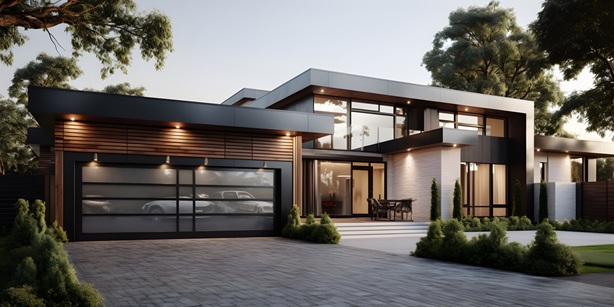Discover our properties for sale
Technical Challenges in Housing: Towards Sustainable and Innovative Construction
With the energy transition and increasing expectations for environmental performance, the construction sector faces several technical challenges to meet current needs. These challenges align with new construction standards, particularly the environmental regulation RE 2020, and significantly influence building design. Below is an analysis of the main issues.
Technical Challenges in Housing: Comfort, Performance, and Resilience
The development of modern housing requires a comprehensive approach to combine energy efficiency, occupant comfort, and resilience to climate challenges. Key challenges include:
Thermal Insulation and Energy Performance
Buildings must minimize heat loss in winter and maintain coolness in summer. This is achieved through high-performance insulating materials, triple-glazed windows, and improved airtightness of building envelopes.
Ventilation and Indoor Air Quality Management
With more airtight buildings, controlling ventilation is essential to prevent the accumulation of indoor pollutants and ensure optimal air renewal using double-flow mechanical ventilation systems (VMC).
Integration of Renewable Energy
Solar panels, heat pumps, and energy storage systems are integral to sustainable housing. These technologies must be incorporated at the design stage to maximize efficiency.
Sustainable and Low-Carbon Materials
Reducing the carbon footprint of construction requires innovative materials such as low-carbon concrete, solid wood, or bio-sourced insulation like hemp and wood wool.
Construction Standards and RE 2020 Regulation: A Green Revolution
The environmental regulation RE 2020, in effect since January 2022, represents a significant step in the ecological transition of the building sector. Its requirements go beyond energy efficiency to include considerations for the entire life cycle of buildings.
Key Objectives of RE 2020:
- Reducing Energy Consumption: New housing must be energy-passive or even energy-positive. The goal is to limit consumption to below 50 kWh/m²/year on average.
- Lowering Carbon Footprint: Builders must evaluate and reduce CO₂ emissions across the building's life cycle, from material production to end-of-life.
- Summer Comfort: In response to global warming, RE 2020 introduces new standards for summer comfort (overheating factor), with solutions such as natural ventilation, solar protections, or materials with high thermal inertia.
Impact on Construction Stakeholders:
- Architects must rethink projects by incorporating life cycle assessments (LCA).
- Developers must prioritize sustainable solutions while managing costs.
- Craftspeople and construction companies need training in new techniques, such as installing bio-sourced insulation or high-performance energy systems.
The New Design of Buildings: Innovation and Adaptability
Today’s buildings must meet occupant expectations while adapting to a constantly evolving environment. New designs emphasize innovative approaches:
Bioclimatic Architecture
Bioclimatic designs maximize the use of natural resources (sunlight, wind, vegetation) to optimize thermal comfort. Building orientation, glazed surfaces, and shaded areas play a crucial role.
Smart Buildings and Home Automation
Smart buildings use connected technologies to optimize energy management, security, and comfort. For instance, sensors and automated systems regulate temperature or lighting based on needs.
Modularity and Adaptability
Modular housing meets the demands of new lifestyles. Flexible spaces adapt to evolving needs with movable partitions or expandable structures.
Greening and Biodiversity
Green roofs, living walls, and outdoor spaces integrating biodiversity contribute to better thermal regulation, rainwater management, and improved quality of life.
Technical challenges, construction standards like RE 2020, and new design approaches are driving a radical transformation in the building sector. These developments offer opportunities to create more sustainable, comfortable, and environmentally responsive housing. However, this transition requires close collaboration among all construction stakeholders—from designers to users—to build a future where innovation and environmental responsibility go hand in hand.

